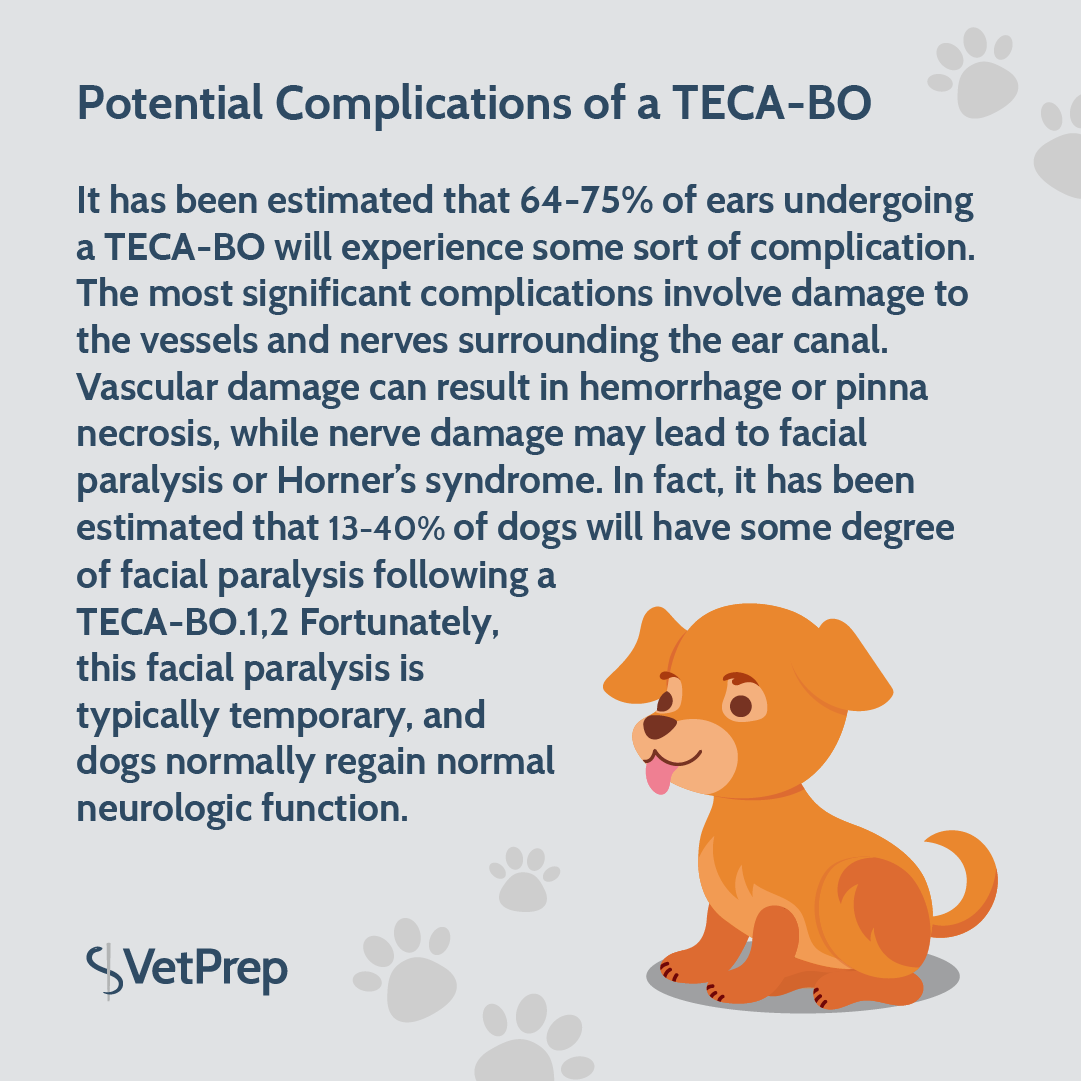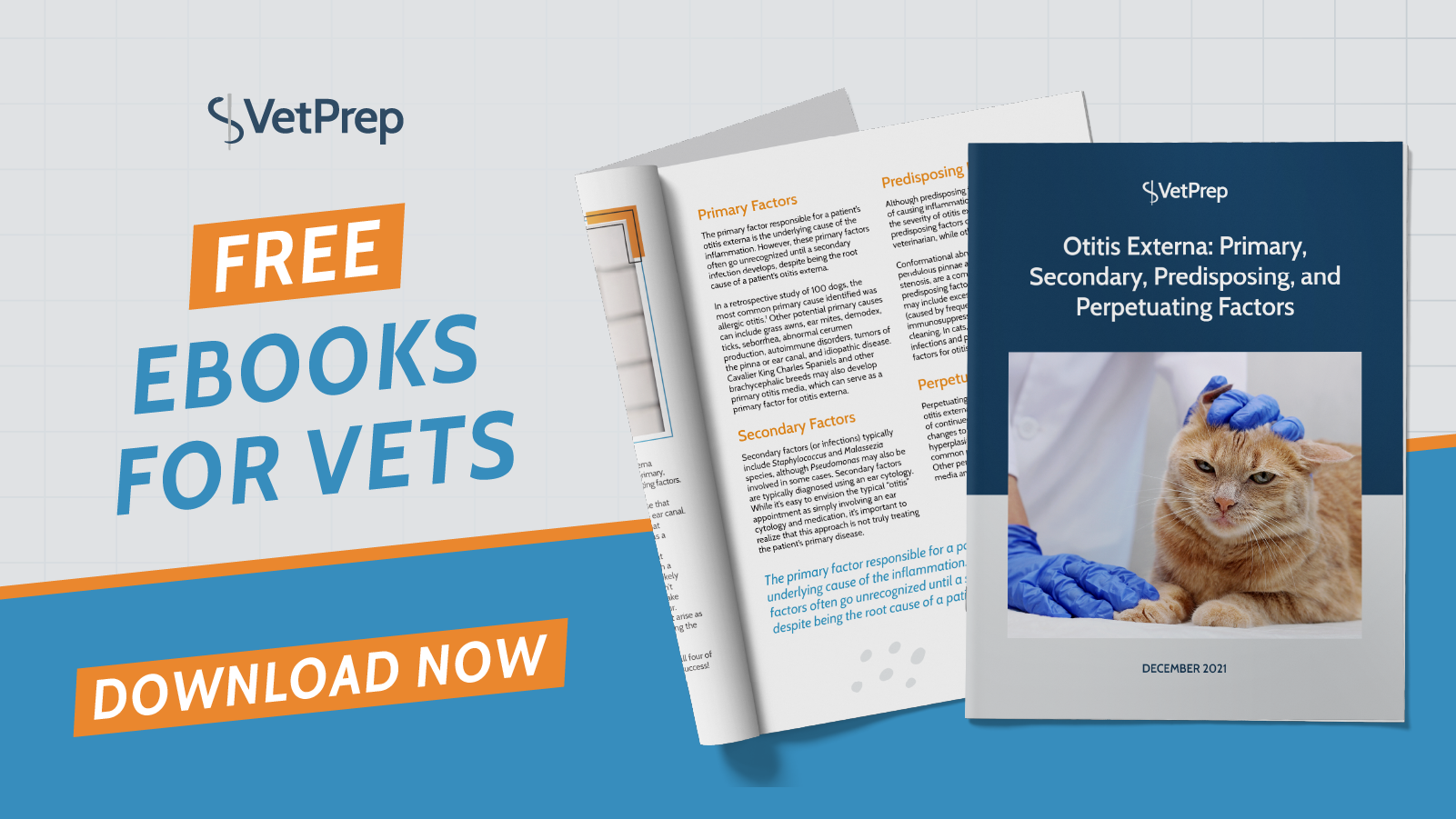
 A total ear canal ablation (TECA) refers to the surgical removal of the entire ear canal. This procedure is typically combined with a bulla osteotomy (TECA-BO), in order to clear the middle ear of infection and reduce the risk of abscessation. The inner ear is left intact.
A total ear canal ablation (TECA) refers to the surgical removal of the entire ear canal. This procedure is typically combined with a bulla osteotomy (TECA-BO), in order to clear the middle ear of infection and reduce the risk of abscessation. The inner ear is left intact.
Most pets recover relatively quickly from this procedure. The hair around the ear will regrow and the fact that the dog had surgery will no longer be apparent. Although the dog’s inner ear (which is responsible for hearing) is left intact, the removal of the ear canal often results in a loss of hearing.
By the time a TECA-BO is being considered, however, the dog’s ear canal is already so diseased that the dog cannot hear. Therefore, many owners don’t notice a significant change in their dog’s hearing postoperatively.
Indications for a TECA-BO
The most common TECA-BO patient is one with a history of recurrent or chronic otitis externa. If the dog’s infections are no longer responding to treatment or the client has reached “the end of their rope,” a TECA-BO should be considered. The same can also be said for a dog with recurrent infections that has become impossible to medicate due to pain and anxiety surrounding ear treatments.

Chronic, physical changes within the ear canal can also suggest the need for a TECA-BO. Mineralized ear canals (on palpation), hyperplastic epithelium in the canals (on otoscopic exam), and a ruptured eardrum are all indications that a given patient may benefit from a TECA-BO. Radiographic visualization of mineralized canals and/or bulla involvement also support the need for a TECA-BO.
Periotic abscesses and neoplasia of the ear canal are less common indications for TECA-BO.
Potential Complications of a TECA-BO
It has been estimated that 64-75% of ears undergoing a TECA-BO will experience some sort of complication.1 The most significant complications involve damage to the vessels and nerves surrounding the ear canal. Vascular damage can result in hemorrhage or pinna necrosis, while nerve damage may lead to facial paralysis or Horner’s syndrome. In fact, it has been estimated that 13-40% of dogs will have some degree of facial paralysis following a TECA-BO.1,2 Fortunately, this facial paralysis is typically temporary, and dogs normally regain normal neurologic function.

Drainage or abscessation at the surgical site may occur up to two years post-operatively if the infection is not fully eliminated. This complication has been documented to occur in up to 10% of cases.2 Oral antibiotics may temporarily alleviate this drainage, but a second surgery is often required to remove remaining infection.
TECA-BO: Talking Points for Clients
When recommending referral for a TECA-BO, consider the following points when communicating with your client:
- TECA-BO is a viable treatment option for dogs with uncontrollable, end-stage otitis externa.
- The hearing loss associated with TECA-BO is often indistinguishable from the hearing loss associated with end-stage ear canal disease.
- Although complications may occur, many of these complications are temporary.
- A surgical consult is the best way to gain more information about this procedure, including expected recovery and prognosis.
References
- Coleman, K. A., & Smeak, D. D. (2016). Complication Rates After Bilateral versus Unilateral Total Ear Canal Ablation with Lateral Bulla Osteotomy for End-Stage Inflammatory Ear Disease in Dogs: 79 Ears. Veterinary surgery : VS, 45(5), 659–663.
- Smeak D. D. (2011). Management of complications associated with total ear canal ablation and bulla osteotomy in dogs and cats. The Veterinary clinics of North America. Small animal practice, 41(5), 981–vii.



